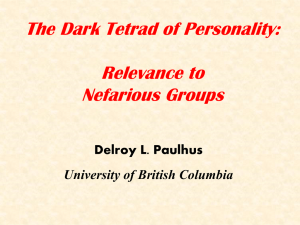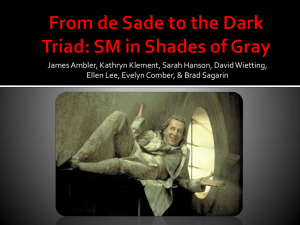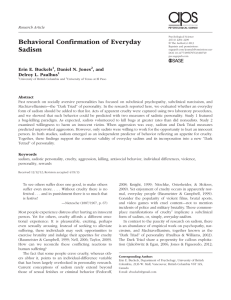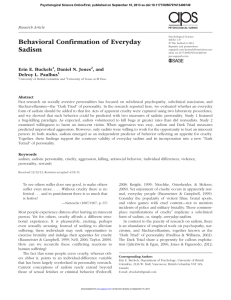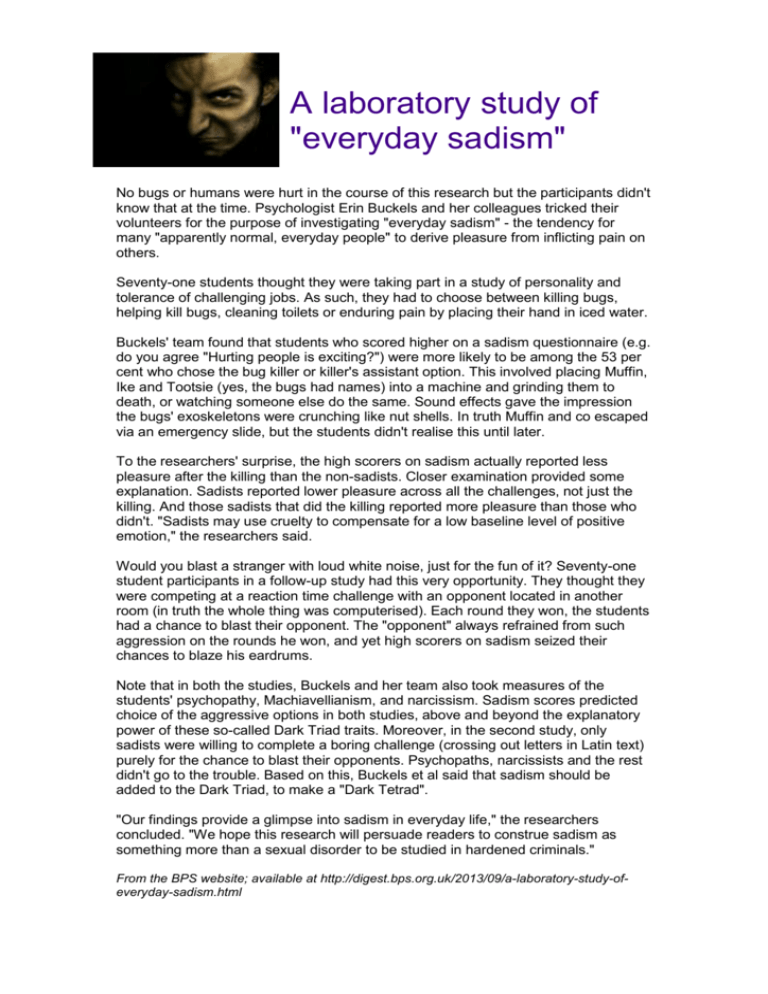
A laboratory study of
"everyday sadism"
No bugs or humans were hurt in the course of this research but the participants didn't
know that at the time. Psychologist Erin Buckels and her colleagues tricked their
volunteers for the purpose of investigating "everyday sadism" - the tendency for
many "apparently normal, everyday people" to derive pleasure from inflicting pain on
others.
Seventy-one students thought they were taking part in a study of personality and
tolerance of challenging jobs. As such, they had to choose between killing bugs,
helping kill bugs, cleaning toilets or enduring pain by placing their hand in iced water.
Buckels' team found that students who scored higher on a sadism questionnaire (e.g.
do you agree "Hurting people is exciting?") were more likely to be among the 53 per
cent who chose the bug killer or killer's assistant option. This involved placing Muffin,
Ike and Tootsie (yes, the bugs had names) into a machine and grinding them to
death, or watching someone else do the same. Sound effects gave the impression
the bugs' exoskeletons were crunching like nut shells. In truth Muffin and co escaped
via an emergency slide, but the students didn't realise this until later.
To the researchers' surprise, the high scorers on sadism actually reported less
pleasure after the killing than the non-sadists. Closer examination provided some
explanation. Sadists reported lower pleasure across all the challenges, not just the
killing. And those sadists that did the killing reported more pleasure than those who
didn't. "Sadists may use cruelty to compensate for a low baseline level of positive
emotion," the researchers said.
Would you blast a stranger with loud white noise, just for the fun of it? Seventy-one
student participants in a follow-up study had this very opportunity. They thought they
were competing at a reaction time challenge with an opponent located in another
room (in truth the whole thing was computerised). Each round they won, the students
had a chance to blast their opponent. The "opponent" always refrained from such
aggression on the rounds he won, and yet high scorers on sadism seized their
chances to blaze his eardrums.
Note that in both the studies, Buckels and her team also took measures of the
students' psychopathy, Machiavellianism, and narcissism. Sadism scores predicted
choice of the aggressive options in both studies, above and beyond the explanatory
power of these so-called Dark Triad traits. Moreover, in the second study, only
sadists were willing to complete a boring challenge (crossing out letters in Latin text)
purely for the chance to blast their opponents. Psychopaths, narcissists and the rest
didn't go to the trouble. Based on this, Buckels et al said that sadism should be
added to the Dark Triad, to make a "Dark Tetrad".
"Our findings provide a glimpse into sadism in everyday life," the researchers
concluded. "We hope this research will persuade readers to construe sadism as
something more than a sexual disorder to be studied in hardened criminals."
From the BPS website; available at http://digest.bps.org.uk/2013/09/a-laboratory-study-ofeveryday-sadism.html



